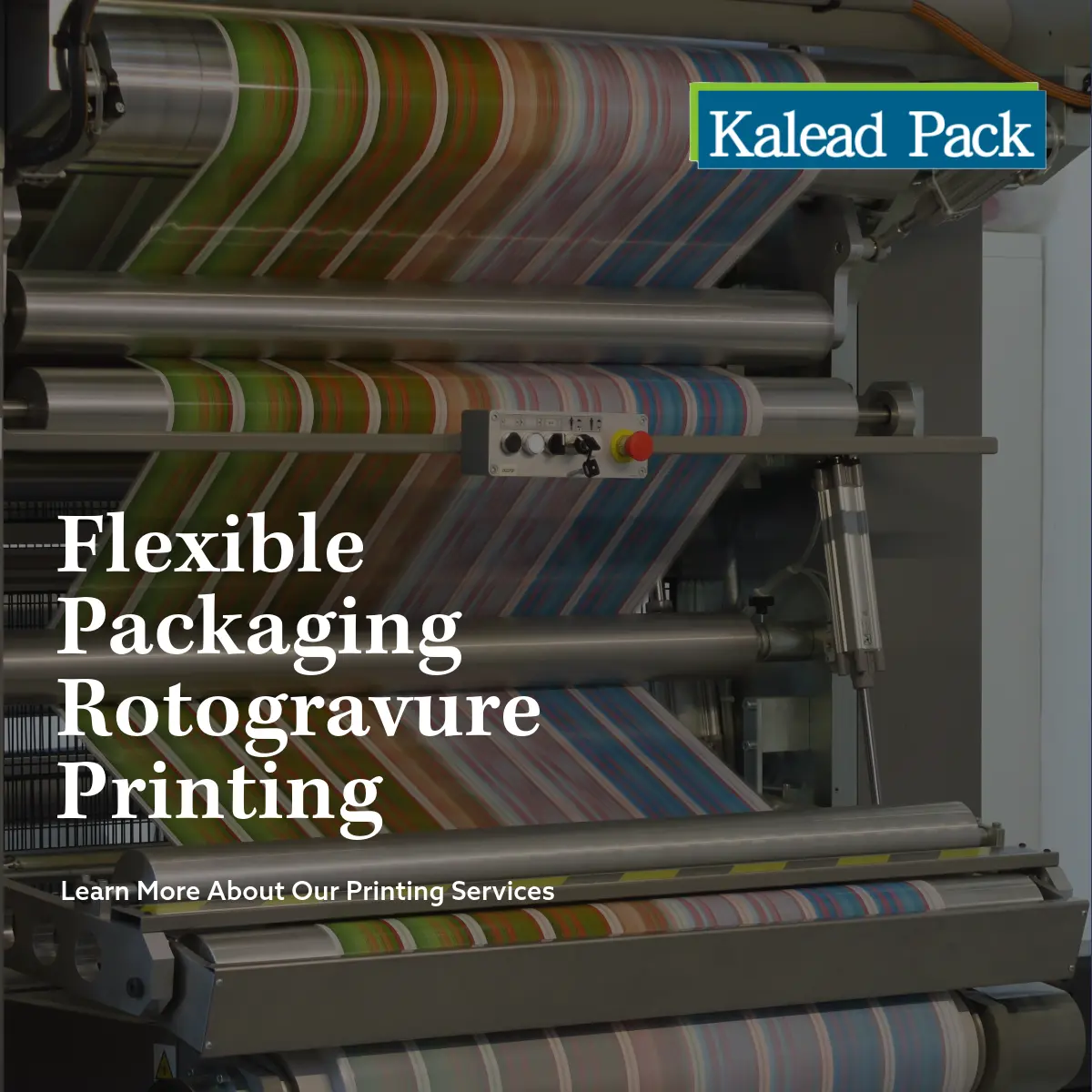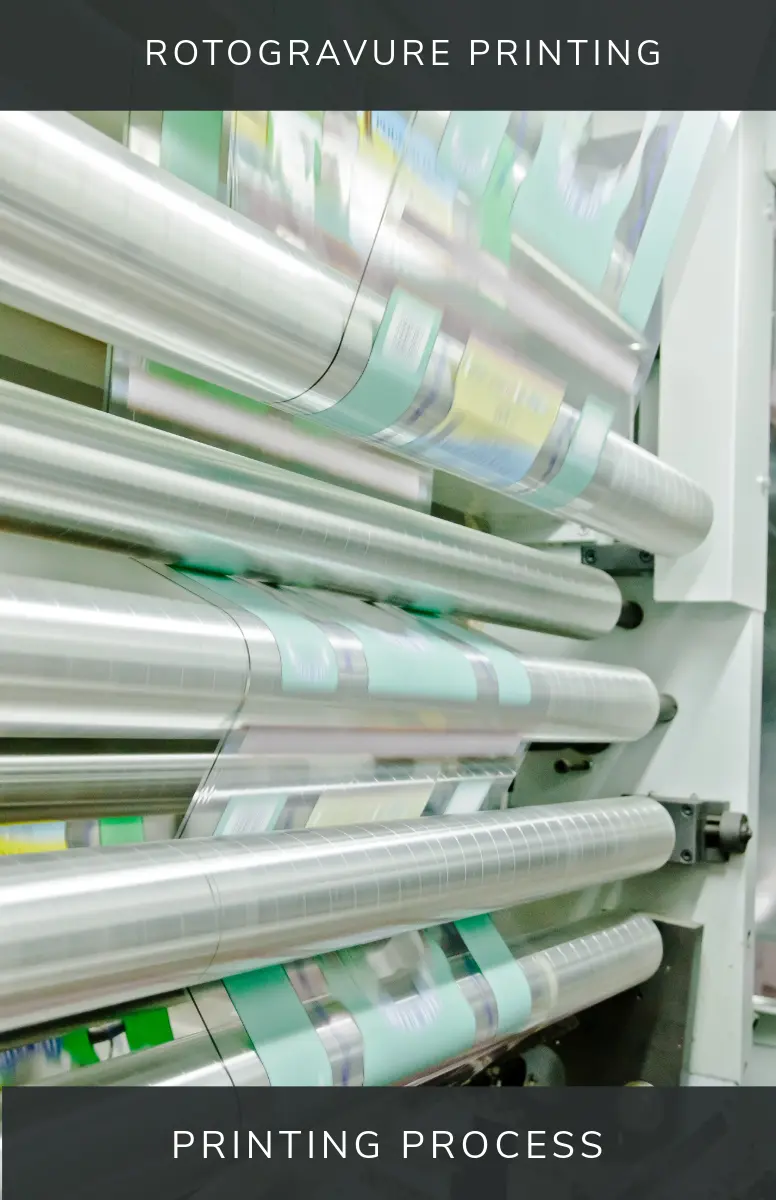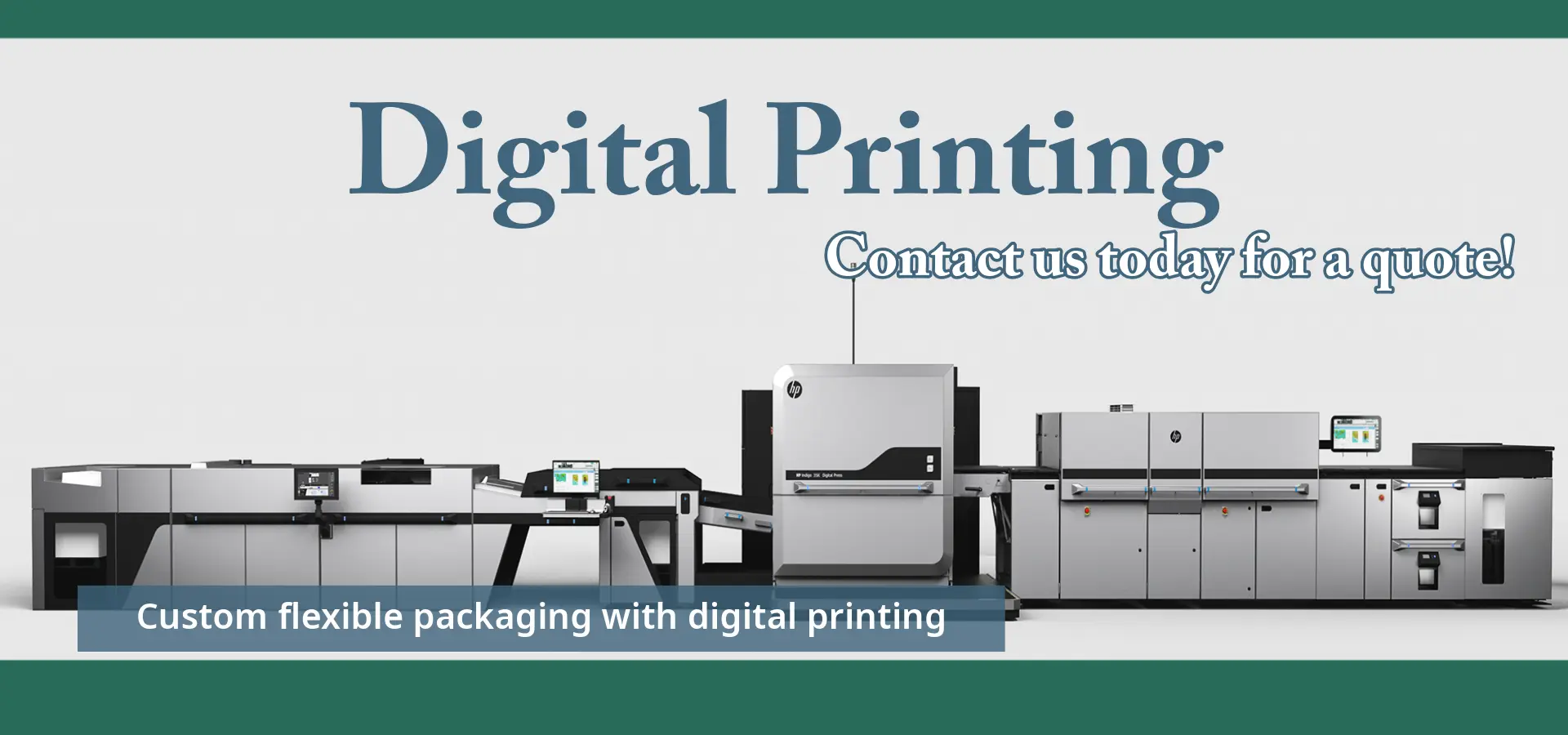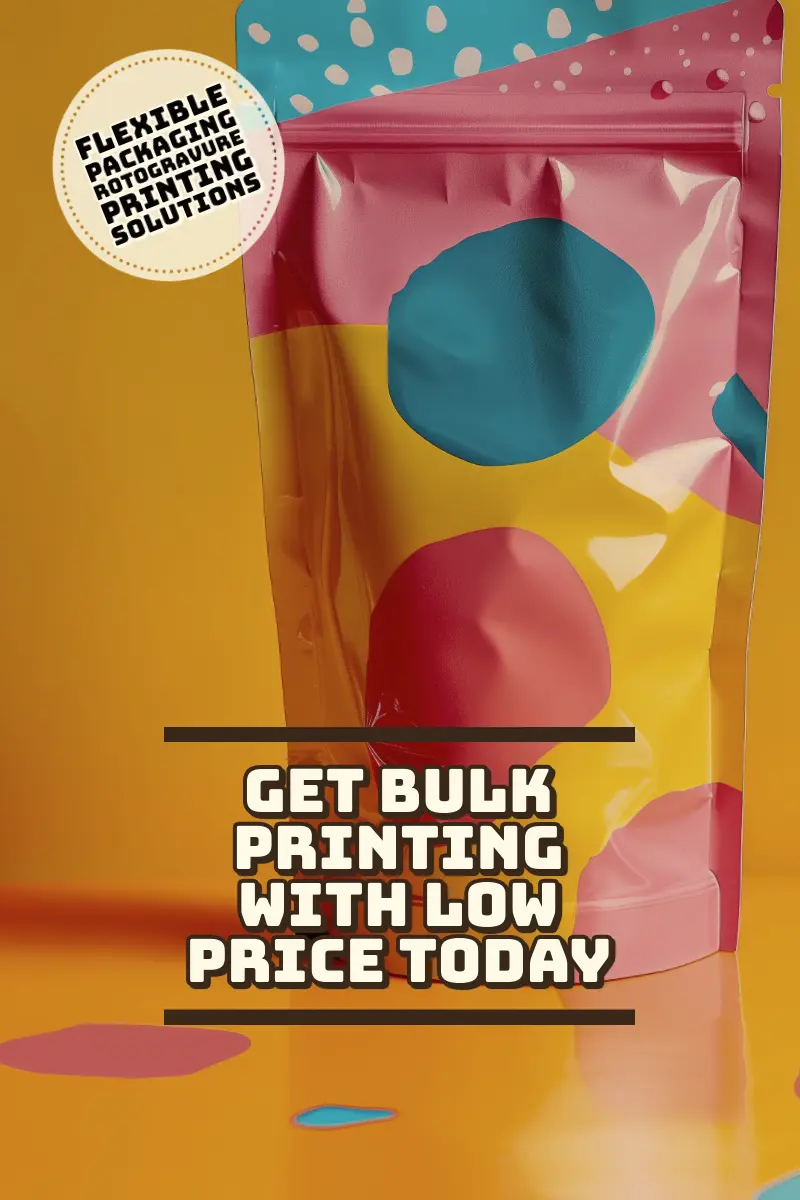Impression en héliogravure
Flexible packaging rotogravure printing remains the top choice for large-scale custom packaging. This well-established traditional printing technology provides high-quality image reproduction, making it ideal for various flexible packaging materials.
What Is Flexible Packaging Rotogravure Printing?
Flexible packaging rotogravure printing is an effective method to print images and text on plastic, foil, and paper. This process involves engraving the image onto a cylinder, which transfers the ink onto the packaging material. The cylinder contains tiny cells that hold the ink, and it transfers the ink to the material as it rotates.
One of the main benefits of rotogravure printing is its ability to produce high-quality, vivid images on packaging surface. This is perfect for packaging that needs to be eye-catching and detailed, like food, medicine, and other consumer products.
(Many food or non-food manufacturers use this printing method to make detailed designs on bulk packaging bags.)
The process starts with engraving the cylinder with the desired image, using either a laser or a diamond tool. The operator then mounts the cylinder onto the printing press, where it picks up ink from an ink fountain. A doctor blade removes excess ink, leaving the ink in the engraved cells. As the material passes through the press, it contacts the inked cylinder, transferring the image onto the material.
Rotogravure printing is efficient and fast, making it a cost-effective choice for large-scale production. It offers excellent color consistency and uses various inks and materials, making it suitable for different packaging needs.


Rotogravure Printing Process
1. Cylinder Engraving
- Scellage fin (Fin Seal) : bords superposés. rotogravure printing process begins with cylinder engraving. A copper-plated steel cylinder gets engraved with tiny cells. Each cell holds ink.
2. Ink Application
Subsequently, the cylinder spins within an ink reservoir.. The cells fill with ink. A doctor blade scrapes off excess ink from the surface. Only the cells contain ink.
3. Printing
The cylinder then contacts the substrate, which could be paper or plastic film. The ink transfers from the cells to the substrate. This step ensures precise and consistent prints.
4. Drying Process
After printing, the material passes through drying ovens. These ovens evaporate solvents from the ink. This step is crucial to prevent smudging.
5. Material Rewinding
Finally, the printed material gets rewound onto a roll. This makes it ready for further processing or packaging. Rewinding ensures that the print remains intact.
6. Slitting
The slitting process begins with mounting the printed roll material onto the slitting machine. The machine uses rotary blades or laser cutting technology to cut the wide roll into strips of the desired width.
Advantages of Rotogravure Printing
High-Quality Image
Rotogravure printing offers excellent image quality. The process can produce highly detailed images with sharp lines and vivid colors. This makes it ideal for packaging that needs to stand out on shelves. Colors remain consistent across large print runs.
Flexible Substrate Printing
Rotogravure prints on multiple substrates. It works well with thin films, aluminum foil, and paper. This flexibility allows businesses to choose the best material for their products. For example, snack packaging often uses thin film for their durability and lightweight properties.
Cost-Effectiveness
Rotogravure is efficient for long-run printing jobs. The initial cost of creating engraved cylinders is high.
However, these cylinders last a long time without degrading. This leads to lower costs for large volume orders. Companies save money when producing millions of identical packages.
Cost Benefits
Rotogravure has significant cost benefits. Although setup costs are high, per-unit costs decrease with larger quantities. This makes it a cost-effective choice for products requiring mass production. Brands benefit from lower overall expenses while maintaining high-quality prints.
Rotogravure Printing for Large Production Runs
- Rotogravure printing may be an excellent option for brands looking to reduce per unit costs, especially for production runs of 10,000 units or more.
- It is a more durable and fade resistant printing method than digital printing.
- Pantone color matching is possible for accurate colors.
- Il permet une large sélection de finitions et d'effets pour les sachets.
- La constance des couleurs est excellente entre les tirages.
- Des plaques d'impression en cuivre sont utilisées, une par couleur, et peuvent être réutilisées pour des millions d'impressions sur plusieurs tirages.
- Les coûts des plaques sont des frais uniques et permettent souvent des économies dès le premier tirage.
- Les plaques individuelles peuvent être remplacées pour mettre à jour les designs avec des modifications d'informations de formule.
Impression par Rotogravure vs Impression Numérique
L'impression d'emballages flexibles utilise 2 méthodes courantes. Voici un résumé :
Rotogravure :
- Idéale pour les projets d'impression en grande quantité, de haute qualité et constants.
- Parfaite pour les industries nécessitant des emballages détaillés et vibrants, comme l'agroalimentaire et la pharmaceutique.
Impression Numérique :
- Idéale pour les tirages petits à moyens et les projets personnalisés.
- Parfaite pour les entreprises ayant besoin de délais rapides et d'impressions personnalisées, comme les supports marketing et les emballages sur mesure.

Comparaison entre l'impression numérique et l'héliogravure
| Caractéristique | Impression en héliogravure | Impression numérique |
|---|---|---|
| Technologie | Utilise des cylindres gravés | Utilise des fichiers numériques et jet d'encre/laser |
| Temps de préparation | Temps de préparation long | Temps de préparation court |
| Rentabilité | Rentable pour les gros volumes | Rentable pour les petits tirages |
| Qualité d'impression | Impressions de haute qualité et constantes | Haute qualité, mais peut varier |
| Gamme de Couleurs | Excellente reproduction des couleurs | Bonne gamme de couleurs |
| Délai de production | Plus long en raison de la préparation et de la production | Délais d'exécution rapides |
| Flexibilité | Moins flexible, adapté aux travaux répétitifs | Très flexible, modifications de design faciles |
| Coût Initial | Coût initial élevé dû à la gravure des cylindres | Coût initial faible |
| Impression de Données Variables | Non adapté | Idéal pour l'impression de données variables |
| Impact environnemental | Déchets et utilisation de produits chimiques plus importants | Moins de déchets, plus écologique |
| Durabilité des Impressions | Très durable et longue durée (jusqu'à 3 ans) | Durable, mais peut s'estomper avec le temps |
Questions Fréquentes
La rotogravure utilise des cylindres gravés pour transférer l'encre sur un substrat. Le cylindre tourne dans une cuve à encre, capte l'encre dans ses alvéoles gravées, et la transfère sur le matériau.
La rotogravure offre des images de haute précision, une efficacité et une vitesse élevées. Également rentable pour les gros tirages grâce à sa durabilité et ses capacités de production rapide.
Oui, la rotogravure est rentable pour les gros volumesLa configuration initiale peut être coûteuse, mais elle génère des économies à long terme pour la production à grande échelle.
Oui, KaleadPack fournit des échantillons gratuits avec expédition mondiale. Contactez-nous pour une solution d'emballage clé en main : sachets, impression de films et machines d'emballage.

